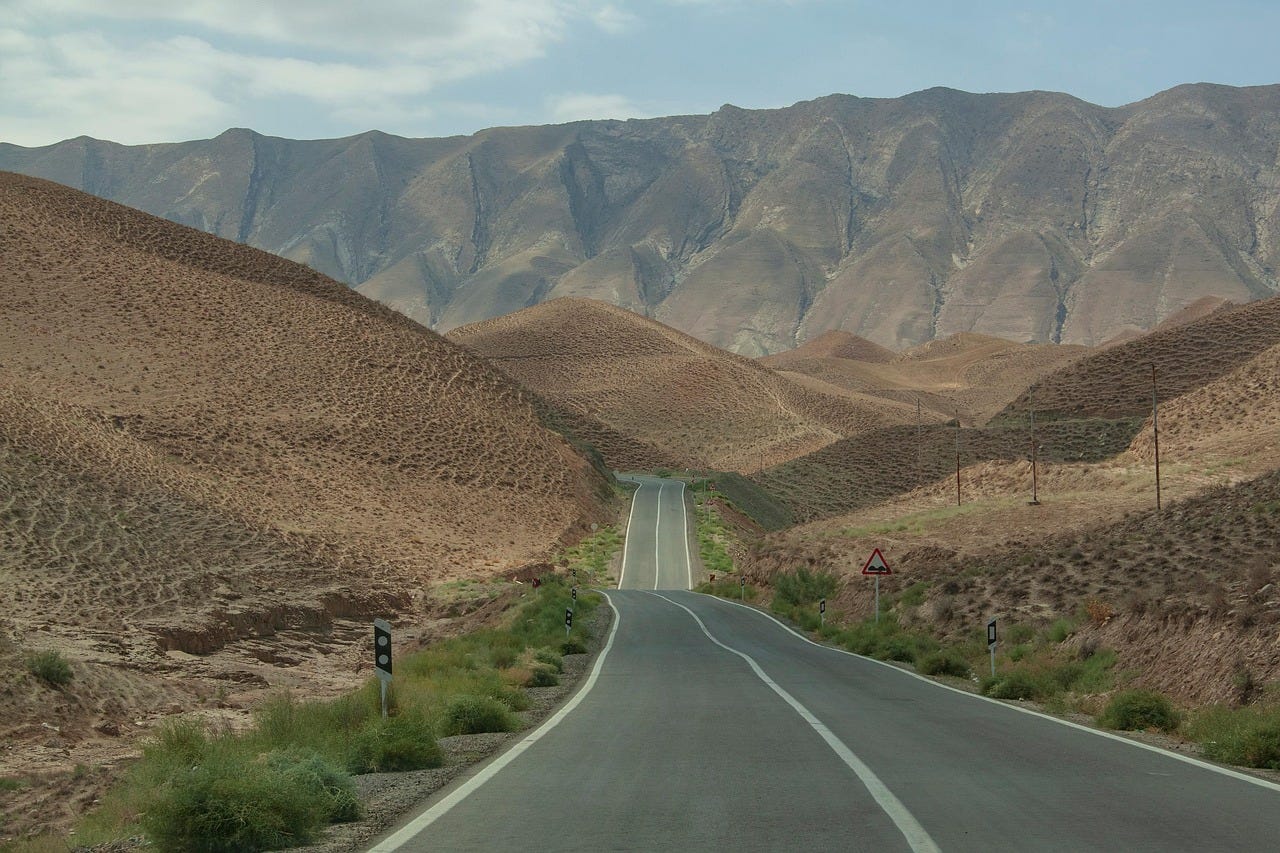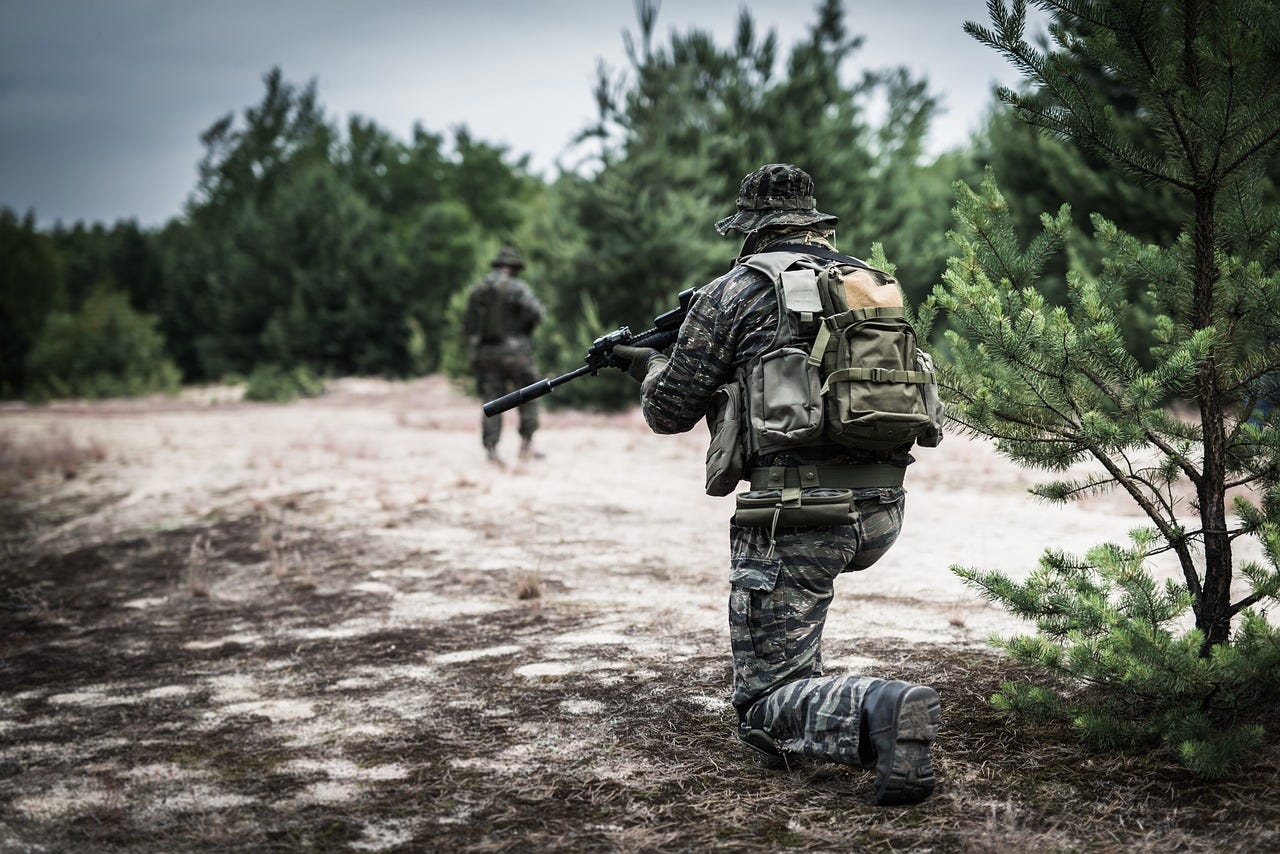Should you visit dangerous countries?
Are governmental travel advisories to be heeded or ignored?
The unfortunate news this week of a British couple, Craig and Lindsay Foreman, being detained by Iranian authorities on espionage charges opens up questions about when - or whether - you should ignore official advice about travelling to dangerous countries.
The couple were posting their travels on social media as they progressed on a round-the-world motorcycle trip to Australia. After crossing from Armenia into Iran in late December, a few days later their social media channels went quiet and family and friends lost contact.
The couple have since been accused by the Iranian authorities of ‘cooperating with covert institutions linked to the intelligence services of hostile and Western countries’.
Since its creation on 1 April 1979, the Islamic Republic of Iran has engaged in dubious detention of foreign or dual nationals numerous times, often finding it a potent bargaining chip in diplomatic negotiations with other countries. The most well-known example in recent years was Iranian-British dual citizen Nazanin Zaghari-Ratcliffe, who was arrested on suspicion of spying in Iran in 2016 and not released until 2022.
In its travel advisory, the UK Foreign Office currently warns that British citizens entering Iran face a ‘very high risk of arrest, questioning and detention’ and that simply holding a British passport, engaging in social media or having perceived connections with the UK can be reason enough for Iranian authorities to detain you. If you are detained, you could face months or years of imprisonment and there is even a risk of being sentenced to death.
The couple travelled to Iran despite being aware of the risks. The knee-jerk reaction to all this would be that it is foolhardy to do so: not only are you exposing yourself to unnecessary risk, but it results in huge stress for your family and the British government having to enter into negotiations with an authoritarian regime over the release of two British nationals, using up considerable funds and other resources.
However, travel isn’t as black and white as that. Many travellers who go off the beaten track believe government travel advisories are often unnecessarily cautious, that destinations painted as very dangerous are anything but, once you’re there on the ground. And that if things were turned around, a travel advisory for the UK would be full of warnings about dangers of regular murders, stabbings and robberies (especially mobile phone robberies at present) in cities, especially London, and regular shootings in the US.
I once talked to a white pilot who had grown up during what he called the Rhodesian Bush War, but which a black Zimbabwean would term the Zimbabwean War of Liberation. He told me that he would routinely walk to school carrying a gun. When he then told me about fending off snakes and other horrors over the years I said I couldn’t believe the dangers he’d lived under.
“Sorry, you told me you lived on a road in London with five lanes of traffic?,” he replied. “That’s insane.”
Indeed, at the time I lived on a huge road in London, and to him that sounded far more dangerous than what he had experienced. And indeed, someone was fatally run over just outside my home the same month.
Of course government travel warnings should be taken seriously and heeded to a degree - and visiting a destination the Foreign Office says is too dangerous will invalidate your travel insurance - but sometimes some advice can seem a bit overcautious: currently the Foreign Office deems 21% of the world’s landmass to be partially or fully off limits.
I’ve almost being put off visiting a few countries because of a travel advisory that talked of what seemed unacceptable threats of things such as robbery and violence. At first glance these looked a bit alarming, but looking closer, the incidents were rare, the country and population were huge.
To muddy the waters even more, a climate of fear is often generated by media reports about the worst crimes at a destination, however unusual they may be, therefore completely distorting the reality on the ground. Most people around the world are generous, friendly, trustworthy and willing to help out if you need it. In fact, it can be very humbling how helpful someone from a very poor country can be to an obviously much richer tourist when they need it, without expecting any recompense, or having no intention at all of robbing them.
And you’re exposed to risk wherever you go, whether there’s a travel advisory or not. In the past I’ve been next to a travelling companion being robbed at knifepoint, been arrested on spurious charges, had guns pointed at me by over-zealous, trigger-happy (and at one time drunk) soldiers - and all these happened in countries where there were no travel advisories telling me not to go there.
Conversely, one of the places I did feel pretty uneasy was a place where a Foreign Office travel advisory had recently been lifted.
It was the heart of Hezbollah country on a visit to Lebanon. Security was so unstable when I visited that the hotel admitted to having regular searches for possible bombs throughout the day, and had a tank parked directly outside the entrance for good measure.
There are a number of popular tourism destinations that have a comparatively high set of dangers. For example, South Africa, where carjackings are common and many homes are heavily guarded, have 24-hour security guards, and signs saying they won’t hesitate to shoot unauthorised visitors.
Or there’s Dubai, where Londoner Marcus Fakana, 18, was recently jailed for having sex with a girl just a few months younger than him. A number of foreigners have been jailed there for such things as criticising the Government or a business, swearing on social media, insulting someone, or making negative comments about the royal family or the law.
Many tourists visit Brazil, but I met a travel writer who was once kidnapped there, and currently a search is under way for British journalist Charlotte Peet, who was reported missing on February 8 in Rio.
Of course, there’s quite a difference between visiting a country that has pockets of dangerous regions or a few strict laws and ones like Iran, where the whole country is widely deemed a no-go area.
But Craig and Lindsay Foreman aren’t unique in their willingness to travel to dangerous areas. Indeed, there’s a growing army of travellers with a healthy appetite for visiting such places, which is known as dark tourism, shock tourism, extreme tourism, war tourism or danger tourism.
On the website Against The Compass (againstthecompass.com) Spaniard Joan Torres has visited, written about and offered trips to a whole host of countries most people would fear to go, and currently says on the site Iran is ‘becoming the destination with the most exponential tourism growth in the world.’ It has a number of articles and travel tips for Iran, but also countries such as Afghanistan, Iraq, Libya, Somalia and Syria. Untamed Borders (untamedborders.com) is another company specialising in places many would consider dangerous, offering trips to places like these.
Blogger Miles Routledge made a name for himself on social media for blogging during the 2021 Taliban uprising in Afghanistan and was detained on a subsequent visit, and there are plenty of other such danger tourists posting on social media.
The world has certainly changed a lot from when it was common to travel the hippie trail from the mid-1950s to the late 1970s through countries such as these. But one thing that hasn’t changed is travellers split between those eager to discover dangerous countries - and those that think such behaviour is completely crazy.







My take - just be reasonable and aware. Travel advisory is worth knowing but also not the main source of information. I went in Iran, it is one of best places. I went in Senegal during last year elections, when most whites left fearing coup d’etat. The town I live in in France lately had highest crime rate in the country. I would usually not ignore the travel advisory but rather read it, along with many other sources and make my mind that way. Those guidelines are made for average tourists, whom I imagine as family with children looking for a beach, ice cream and a theme park nearby. From that perspective, these travel advisories make a lot of sense. You just have to decide for yourself how much you differ from the norm.
Worth noting that on one of Against the Compass' tours, four of the group were murdered.
Risk has two axes: likelihood and severity.
Low likelihood, low severity: most rural areas as long as there aren't drunks and you're not sleeping with anyone you shouldn't.
Low likelihood, high severity: most stereotypical "dangerous countries". Afghanistan, et cetera. You'll probably have an amazing time and meet nothing but wonderful folk, but you could also be shot dead with fellow tourists on an Against the Compass tour. Also, dodgy parts of cities in the Americas.
High likelihood, low severity: for example last month in India where an idiot driver ran over my foot. My main reaction "well, it was going to happen at some point".
High likelihood, high severity: Donbass.